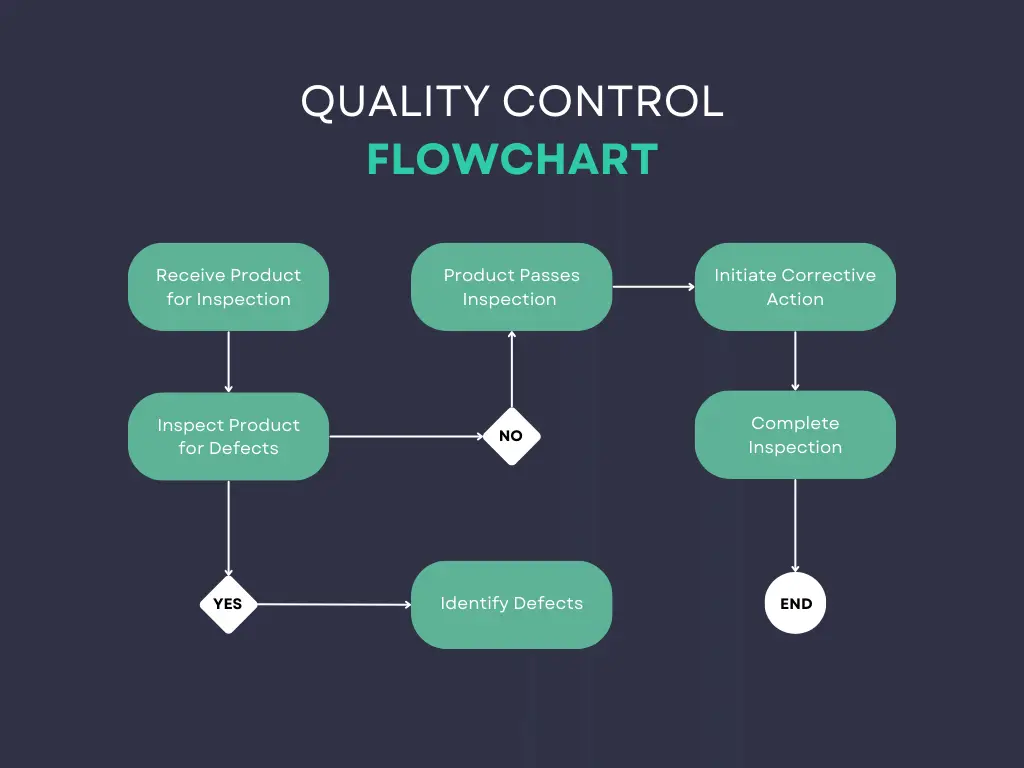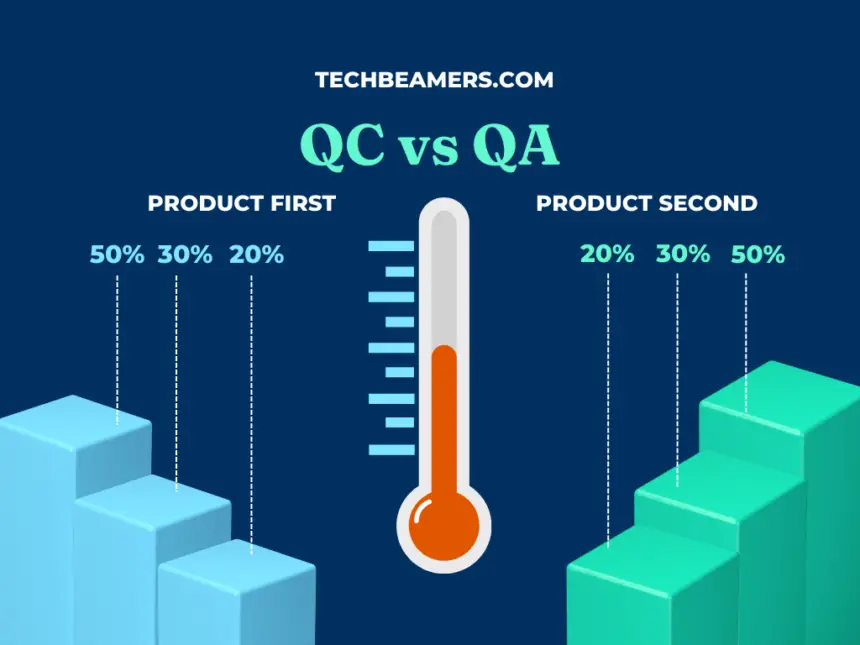In this tutorial, we’ll focus on an important engineering topic, i.e., Quality Assurance vs Quality Control. We’ll try to explain their roles and provide examples so that you can easily grasp these concepts. Finally, we’ll compare them to help you identify which one is most suitable for your specific needs.
Must Read: 25 Software Quality Assurance Interview Questions
Quality Control vs Quality Assurance
Quality Control (QC) and Quality Assurance (QA) are two key aspects of any product or service development process. They both focus on boosting the quality of the final output, but they differ in their style and when they happen.
Quality Control (QC)
Quality Control is a process-oriented approach that aims to identify and rectify defects in the final product. It involves inspecting, testing, and evaluating the product to ensure it meets the required standards. QC typically begins after the product is ready but before the release to the customer.

Key Tasks in Quality Control
- Inspection: This involves a thorough examination of the product to identify any visible defects or deviations from the standards.
- Testing: Performing various tests to verify the product’s functionality, performance, and reliability.
- Sampling: In situations where inspecting every single product is impractical, QC may involve random sampling of products to make judgments about the entire batch.
- Defect Fixing: If the product has bugs, it will go through bug fixing, and retesting will happen to ensure the quality standards.
Quality Control Example
Let’s consider a simple Python function for quality control in a manufacturing process:
def quality_control(product):
if is_defective(product):
rectify_defects(product)
test_product(product)
def is_defective(product):
# Check for defects in the product
return True if defects_found else False
def fix_bugs(product):
# Fix any bugs in the product
pass
def test_product(product):
# Conduct tests to ensure the product meets the quality standards
passIn this example, quality_control is the main function that initiates the QC process. It checks for defects, rectifies them, and tests the product to ensure it meets quality standards.
Quality Assurance (QA)
Quality Assurance, on the contrary, is a proactive and process-oriented approach that intends to stave off defects before they arise. QA ensures that the processes used to develop the product are of high quality and consistent. It’s a systematic way of building quality into the entire development cycle.
Also Read: Amazon Quality Assurance Engineer Interview Guide
Key Tasks in Quality Assurance
- Process Definition: It means to design processes and standards to follow during product development.
- Training and Education: Providing training to the team to ensure they are aware of and can adhere to the established processes.
- Documentation: Manage and pen down processes. Track and analyze changes in the dev process.
- Audits and Reviews: Conducting periodic audits and reviews to ensure compliance with established processes and standards.
Quality Assurance Example
Here’s a Python example of a simple quality assurance function for a software development project:
def quality_assurance(processes, team):
set_up_processes(processes)
train_team(team)
document_processes()
periodic_audit(team)
def set_up_processes(processes):
# Set up and document the dev processes and guidelines
pass
def train_team(team):
# Provide training to the team to ensure they follow the processes
pass
def document_processes():
# Maintain records of processes and changes
pass
def periodic_audit(team):
# Do regular audit of the dev process to ensure compliance
passIn this example, quality_assurance initiates the QA process by defining processes, training the team, documenting processes, and conducting periodic audits.
Comparison of QC and QA
Now, let’s compare Quality Control (QC) and Quality Assurance (QA) in a table:
| Feature | Quality Control (QC) | Quality Assurance (QA) |
|---|---|---|
| Definition | A set of tasks and methods used to identify and correct defects in a product or service. | A set of processes and techniques used to ensure that a product or service meets its intended requirements. |
| Focus | Detecting and fixing bugs | Preventing bugs |
| Approach | Reactive | Proactive |
| Activities | Inspection, testing, data collection, defect tracking, CAPA | Requirements gathering, risk detection, process improvement, quality audits, training |
| Responsibility | Testing team | All project stakeholders |
| Timing | Throughout the product development lifecycle | Primarily in the early stages of the product development lifecycle |
| Most suitable for | Projects that are well-defined and have a low risk of bugs. | Projects that are complex and have a high risk of bugs. |
Which of these methods should you choose?
The most suitable method for a particular project will depend on a number of factors, such as the project’s size, complexity, and risk. In general, QC is more suitable for projects that are well-defined and have a low risk of defects. QA is more suitable for projects that are complex and have a high risk of defects. Here are some guidelines to help you decide:
- Product: If you are dealing with tangible products, such as manufacturing, QC is more suitable to ensure the final product meets quality standards. In contrast, for intangible products like software development or services, QA is more appropriate.
- Cost: QC may lead to higher costs due to defect rectification. If cost control is a significant concern, QA is more cost-effective, as it aims to prevent defects from occurring in the first place.
- Process: If you want to ensure consistent quality throughout the entire development cycle and maintain customer satisfaction, QA is the preferred choice.
- Compliance: In industries where strict compliance with standards is essential, QA helps in setting and following these standards.
Conclusion
In conclusion, we can say that QC and QA are both key modules of a quality management system. By understanding the differences between the two methods, companies can choose the most appropriate approach for their needs.
QC has a reactive focus on bugs in the final product. Whereas QA is proactive and aims to tackle bugs by creating and executing high-quality processes. The choice between QC and QA depends on the nature of your product, cost, and quality goals. Often, a mixture of both QC and QA can lead to the best results. It ensures that your final product is of high quality and free from bugs.
By the way, if this tutorial has helped you gain knowledge, care to share it across your social circle. Also, connect to our social media handles to get free access to our resources.









